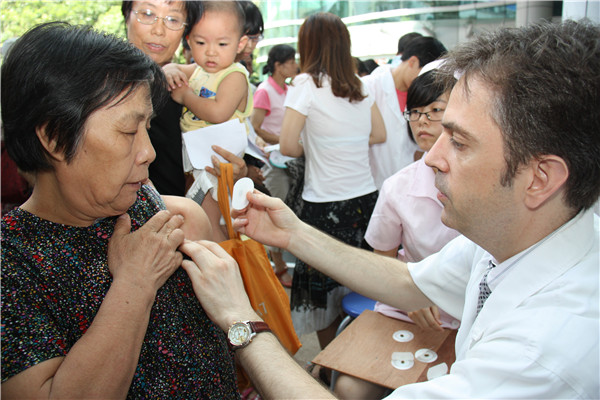TCM gaining recognition with Western institutes
 |
|
Paul Ryan treats a woman with sanfutie plaster, in July, 2012. [Photo provided to China Daily] |
Overseas development
Traditional Chinese medical science relies largely on herbal medications to prevent and help the human body fight ailments, relieve pain and restore health. It also adopts therapies such as acupuncture, blood letting and medical massage.
Yang Zhen, an associate professor in pharmacology at Beijing University of Chinese Medicine, said acupuncture has become popular in many countries, such as the United States, Canada and Australia.
"Acupuncture has been accepted in American society as it has proved effective in many cases, and acupuncture services are available in many big hospitals in the US," said Yang, who is also a licensed acupuncturist in California.
Acupuncture can cure many diseases that modern medicine fails to handle, such as in alleviating vomiting after chemotherapy for cancer patients and easing the side effects caused by taking painkillers, he said.
"Many big insurance companies have included acupuncture treatment to attract more people," he said. "In many states, the US government medical insurance plans also cover acupuncture."
California alone has an estimated 15,000 acupuncturists, most of them non-Asians who serve not only Chinese but also others, Yang said.
However, compared with acupuncture, traditional Chinese medicine is not well accepted in the US, according to Yang.
Medical insurance plans do not pay for TCM expenses, which affects the popularity of TCM, he said.
China will make greater efforts to promote overseas development of traditional Chinese medicine and medical care in the next five years, according to a national plan released by the State Council in April.
According to the plan, China will encourage reputable TCM enterprises and medical institutions to set up hospitals or clinics to provide services to locals.
















